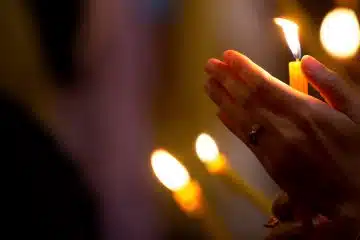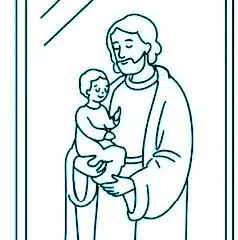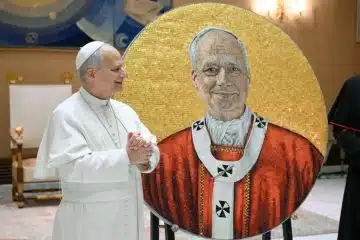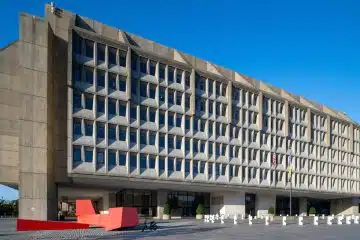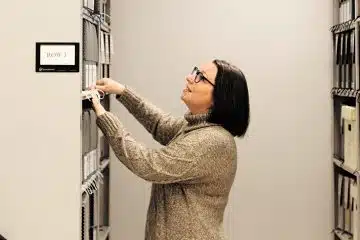By the numbers: How the Catholic Church has changed during Pope Francis’ pontificate
St. Louis, Mo., Mar 13, 2023 / 03:00 am
Pope Francis was elected to the papacy 10 years ago, on March 13, 2013. How has the worldwide Catholic Church changed since then?
Statistically speaking, the Church has grown, keeping pace with and even exceeding overall world population growth. The total number of Catholics worldwide grew from 1.253 billion in 2013 to 1.378 billion in 2021, an increase of nearly 10%. During the same period, the world’s population as a whole grew by 9.1%, according to the World Bank.
Despite this increase, the Church performed 2 million fewer baptisms in 2020 than in 2013. The number of marriages declined by 702,246, or nearly a third. Confirmations and first Communions also dropped by 12% and 13%, respectively, despite relatively stable levels of Mass attendance in the world’s 13 most Catholic countries.
A Catholic researcher told CNA this week that the biggest likely reason for this drop in participation in the sacraments is not hard to guess — three of the 10 years of Francis’ pontificate have been marked by the worldwide effects of a pandemic. But that’s not the only reason, he says.
“I don’t know if the Catholic world has changed as much as just the world [in general] has changed,” Mark Gray, senior researcher with the Center for Applied Research in the Apostolate (CARA) at Georgetown University, told CNA.
“The Church and Pope Francis and bishops have had to try to navigate their way through some really challenging demographic changes as well as the pandemic. And the Catholic Church has come out of these better than many other Christian denominations. So there’s good news there, but there’s still a lot to weather. There’s a headwind, I would say, against the Church.”
The drop in participation in the sacraments worldwide is not due only to the pandemic, he cautioned, but rather is part of a much larger demographic trend worldwide of declining births. According to the World Bank’s world development indicators, life expectancies at birth have been increasing globally from 51 years in 1960 to 72 years in 2020. At the same time, Gray wrote, the birth rate per 1,000 people has fallen from 32 in 1960 to 17 in 2020.
“The number of births is expected to decline annually into the foreseeable future, eventually being outnumbered by deaths in 2085, according to U.N. projections,” Gray wrote in a March 9 blog post.
“The population will grow in the decades ahead as life expectancies continue to increase but at the same time births will decline and that will result in fewer baptisms, fewer first Communions, fewer students, and yes even fewer marriages annually just by the numbers of the demographic shift we are experiencing.”
Gray wrote that the full effects of the COVID-19 pandemic lockdowns, which prevented Catholics around the world from accessing the sacraments for a time, will likely take years to fully quantify. He also cautioned that two of the most authoritative sources for the number of Catholics have significant lags in their data. The most recent full dataset contained in the current edition of the Vatican’s Annuarium Statisticum Ecclesiae is for 2020, though the Vatican’s newspaper published a summary of the 2021 statistics earlier this month. The Official Catholic Directory, which covers the United States, goes up to 2021.
“Any impact, positive or negative, Pope Francis may have had will be overshadowed by the effects of the COVID-19 pandemic when our most current data represents 2020 and 2021,” Gray wrote.
“We know looking at Church data for these years we are going to see lower levels of Mass attendance and sacramental practice with the impact of lockdowns, restrictions, and hesitancy for people to gather in crowds in enclosed spaces during those two years.”
Other statistical indicators present a mixed picture of the Church’s growth in some areas and recession in others. For example, the total number of students in Catholic schools is up by 7.3% since 2013.
“One of the really bright signs for the Church is growth in Catholic education globally; more of the world’s youth are being educated in Catholic schools than they have in years and decades past,” Gray noted to CNA.
The number of diocesan priests worldwide appears to be virtually unchanged in the decade of Pope Francis’ pontificate, while the number of religious priests dipped only slightly. The number of religious sisters worldwide suffered a larger drop of nearly 11%.
According to the Vatican, however, the number of seminarians worldwide has been decreasing since 2013. The 2021 report shows the number of seminarians across the globe decreased by 1.8% since 2020. The sharpest declines were in North America and Europe, where the number of seminarians decreased by 5.8% on both continents.
Despite overall growth in the number of Catholics worldwide, that growth has not been evenly distributed. Overall, Africa has a higher baptism rate than Europe and a far higher rate of Mass attendance in countries with large Catholic populations. Another recent analysis by CARA found that Nigeria, Kenya, and Lebanon have the highest proportion of Catholics who attend Mass weekly or more, with Nigeria as the clear leader. Ninety-four percent of Catholics in Nigeria say they attend Mass at least weekly. In Kenya, the figure was 73%, and in Lebanon it was 69%. In comparison, countries like Germany, France, Switzerland, and the Netherlands are all under 15%.
In addition, Africa bucks the trend of declining vocations by showing an increase in seminarians and religious brothers, according to the 2021 Vatican statistics. Africa also saw the only increase in seminarians and religious brothers across the globe from 2020-2021, at 0.6%. The number of religious brothers in Africa increased by 2.2% during the same time frame.
Pope Francis has made pastoral attention to Africa a priority of late, making a visit to the heavily Catholic Democratic Republic of Congo and South Sudan last month to an enthusiastic welcome.
Focusing on the United States — where a mere 5% of the world’s Catholics live — the picture is a bit less optimistic. In contrast to the stable numbers of the world as a whole, the number of diocesan priests in the U.S. dropped 8% from 2013 to 2021. There are 27% fewer sisters, 19% fewer brothers, and 15% fewer religious priests compared with a decade ago, though the number of permanent deacons has increased slightly, by 3%. Gray said the United States disproportionately relies on immigrant priests to address its own shortages.
Additionally, according to the General Social Survey, weekly Mass attendance among Catholics in the U.S. declined from 25% in 2012 to 17% in 2020-2021. The drop in sacramental participation in the U.S. — baptisms, marriages, etc. — mirrors the global trends.
As well, “since 2013, we’ve lost more than 1,000 parishes through reorganizations and closures,” Gray noted.
“Daily prayer declined from 59% to 51% from 2012 to 2020-2021. Unlike Mass attendance, one can pray at home and this should not have been affected by the pandemic. If anything, one might think Catholics would be praying more often during that time.”
Gray again cautioned that there are much larger demographic and social changes going on in the U.S. — and in the world at large — than can be attributed solely to Pope Francis’ leadership.
“No one should be giving Pope Francis a 10-year report card based on the most current data available,” he concluded.
“And when more comparable post-COVID-19 data are available, any ‘grades’ given for changes in the number of sacraments celebrated should be considered within the context of what is happening demographically across the globe.”
Speaking with CNA, he added: “It’s hard to make this comparison [between 2013 and 2023] because we have these lags in the data … We’ll know more in a couple of years when the data catches up with us.”



